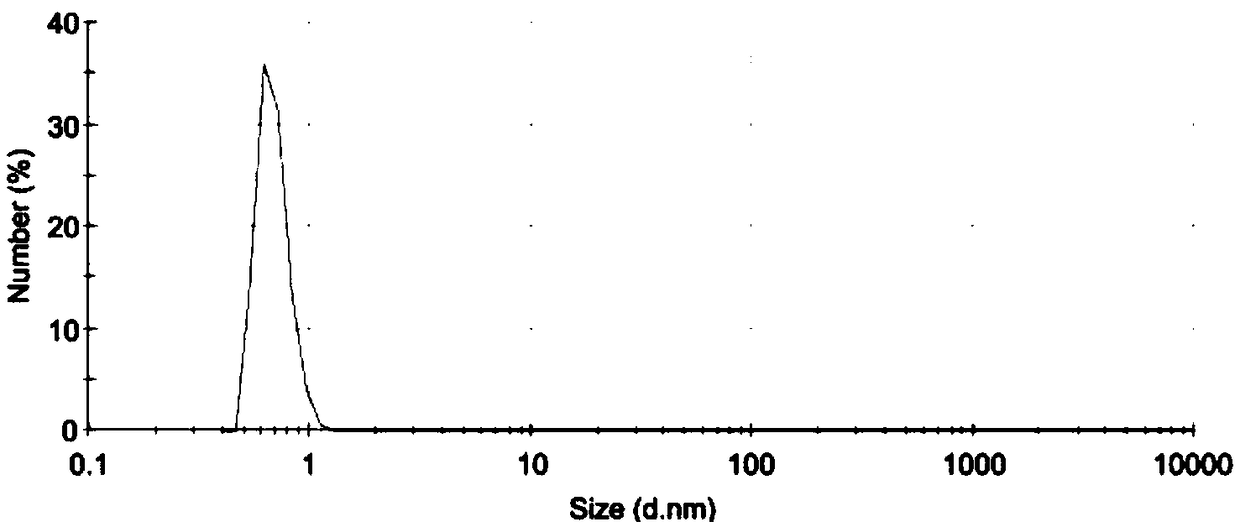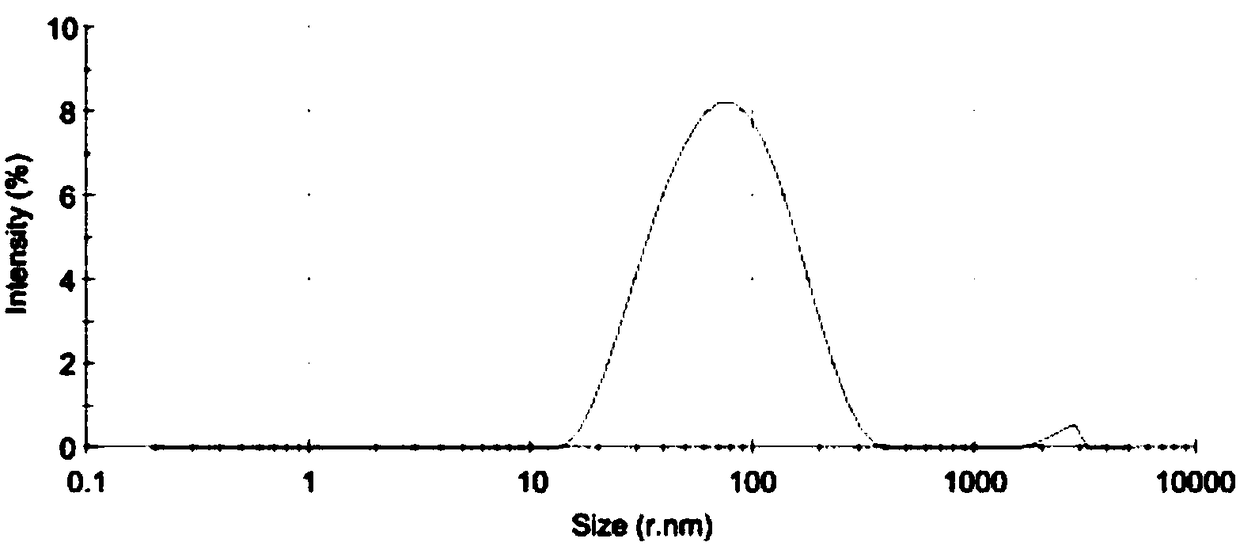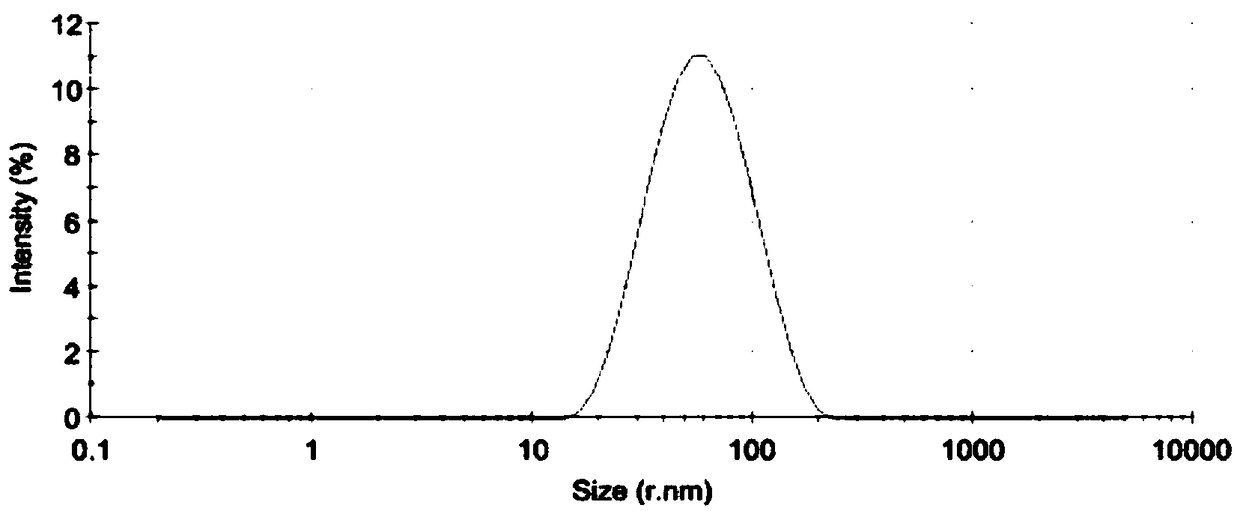Application of heparin iron compound in treatment of chronic inflammatory anemia
A technology of chronic inflammation and complex, applied in the field of medicine and biology, to achieve the effect of increasing the level of hemoglobin, reducing the content of hepcidin and shortening the bleeding time
- Summary
- Abstract
- Description
- Claims
- Application Information
AI Technical Summary
Problems solved by technology
Method used
Image
Examples
Embodiment 1
[0039] Example 1 Determination of heparin and heparin iron particle size
[0040] The experiment set up heparin group and heparin iron complex group for experiment. Weigh an appropriate amount of heparin and dissolve the heparin solution.
[0041] Preparation of heparin iron nanocomposite: slowly add NaOH solution to FeCl 3 In solution, according to the molar ratio of Fe 3+ :OH - =1:2 After mixing, adjust the pH to about 2.8 to form ferrous ion [Fe(OH) 2 ] + Solution. According to the number of uronic acids in the heparin disaccharide structure, the number of sulfuric acid groups and carboxylate groups in the heparin disaccharide structure, and [Fe(OH) 2 ] + Ion combination, prepared into heparin: [Fe(OH) 2 ] + =1:1, 1:2, 1:3, 1:4 complex solutions, respectively called heparin iron complex 1, heparin iron complex 2, heparin iron complex 3, heparin iron complex 4, ultrasound conditions Next, slowly add the ferrous ion solution to the heparin solution, and continue ultrasonication f...
Embodiment 2
[0043] Example 2 Investigation of heparin iron complex targeted inhibition of hepcidin to play an anti-inflammatory anemia effect
[0044] 1. The effect of heparin iron complex on the level of hepcidin in the plasma of inflammatory anemia model mice
[0045] Establishment, intervention and blood sample collection of inflammatory anemia mouse model: SPF BALB / c mice, 6-8 weeks, weight 20-25g, adaptive feeding for 1 week, environmental temperature 25-28℃, free eating and drinking. Randomly divided into 4 groups by digital method, namely normal control group, model group, heparin medication group, heparin iron nanocomposite medication group. The scapular fat of mice was injected into the pad with 0.1mL / 20g of turpentine to establish an inflammatory anemia model; the heparin group was injected with 6mg / kg of heparin daily in the tail vein, and the heparin-iron nanocomposite group was injected with 6mg / kg of heparin daily in the tail vein. Heparin iron. After the administration, 8 mice...
Embodiment 3
[0053] Example 3 Investigation of anticoagulant effect of heparin iron complex
[0054] The experiment was divided into three groups: normal group, heparin group and heparin iron nanocomposite group. The experiment was carried out using the mouse tail-cutting method. After the administration for 20 minutes, the mouse was placed in a fixation device, the tail was vertical, and the vein of the mouse was pierced, causing the mouse to bleed. The timing starts when the blood overflows by itself, every 30s The blood was sucked with filter paper until the blood stopped flowing out naturally, and the bleeding time of each group of mice was recorded.
[0055] The experimental results are as Figure 5 Shown. The results showed that, compared with the normal group, heparin prolonged the clotting time significantly (P 0.05). This indicates that the heparin iron complex developed by the present invention can effectively eliminate the anticoagulant activity of heparin, and will be safer when u...
PUM
| Property | Measurement | Unit |
|---|---|---|
| particle diameter | aaaaa | aaaaa |
| particle diameter | aaaaa | aaaaa |
| particle diameter | aaaaa | aaaaa |
Abstract
Description
Claims
Application Information
 Login to View More
Login to View More - R&D
- Intellectual Property
- Life Sciences
- Materials
- Tech Scout
- Unparalleled Data Quality
- Higher Quality Content
- 60% Fewer Hallucinations
Browse by: Latest US Patents, China's latest patents, Technical Efficacy Thesaurus, Application Domain, Technology Topic, Popular Technical Reports.
© 2025 PatSnap. All rights reserved.Legal|Privacy policy|Modern Slavery Act Transparency Statement|Sitemap|About US| Contact US: help@patsnap.com



